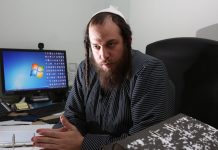Yeshivos in New York State have been under threat for several years from a campaign to change their way of teaching. Now it appears that that threat has grown dangerously. New York State has decided to take action. And to make matters even worse, their new guidelines go beyond simply chasidish yeshivos with minimal secular studies programs, and encompass every type of frum Jewish school, from chasidish ones to Litvish yeshivos to Modern Orthodox schools.
These bombshells came in new guidance released by the New York State Education Department last week. The new guidance, State Education Commissioner MaryEllen Elia said in a statement, was in order to make sure all schools were up to standards: “We want to ensure that all students receive the education they are entitled to under state education laws, no matter which school they attend.”
To get a picture of what the new guidance means, we spoke with Rabbi Chaim Dovid Zwiebel, executive vice-president of Agudath Israel of America, who has been one of the main leaders in the fight for protection of the yeshivos.
A law, dusted off
The new guidelines, as they state in an introduction, were worked on for two years in order to provide “guidance and resources to support public school officials and leaders of nonpublic schools in meeting their respective responsibilities” in regard to enforcement of the “substantial equivalency requirements” of New York State law.
In other words, New York State law requires that nonpublic schools, like yeshivos, teach a curriculum in a manner that is approximately equivalent to the education that a student would get from a public school. Whether yeshivos are living up to that is supposed to be investigated by the local public school district. These guidelines are supposed to help public school districts carry out those investigations and nonpublic schools—including yeshivos—pass them.
The guidelines give a timetable for public school superintendents to carry out a new review. They should start them this year. In most cases, they should finish them by the end of the 2019-2020 school year. In cases where there are just too many nonpublic schools in a school district to complete it by then, they will have until the end of the 2020-2021 school year to do so.





















